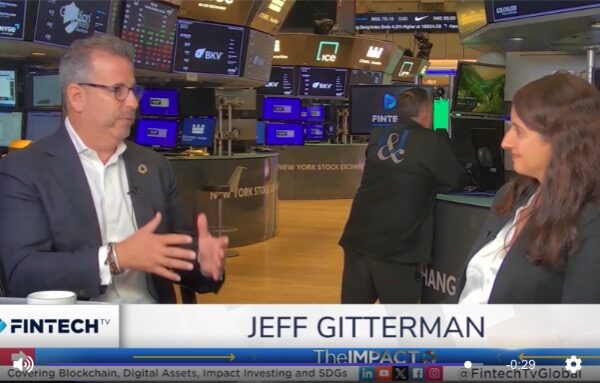The 12 months since last year’s Climate Week have been eventful and challenging — with some hopeful developments and many gut-wrenching ones. Here is Entelligent‘s perspective on the past 12 months’ most important developments in climate-aware investing and risk management, and what they mean.
No. 5: ESG Investing Backlash Appears to Have Succeeded. Now What?
The signal development in this category may have been BlackRock’s decision to back down from its formerly vocal resistance to ESG critics. Less than a year later, Bloomberg reported that the asset manager is entertaining fewer social and climate shareholder proposals. And Fortune wrote that BlackRock and Vanguard, once ESG’s biggest proponents, now seem to be reversing course. Maybe performance has something to do with it, HBR asserts.
The Entelligent View: Let’s be honest. Performance almost certainly does have something to do with it. We believe that, for best results, investors (and regulators) would do well to separate the “E” from the “S” and the “G” when it comes to fund design. More critically: Effective climate-aware investing and risk management is not a matter of broad-brush divestment of carbon emitters. It’s about identifying the assets and investments likely to outperform through the climate transition – drawing on a range of factors beyond carbon emissions. That’s the core of our Smart Climate methodology.
No. 4: Energy Prices Stayed Relevant; Energy Producers Showed Their Colors
In 2022, as the war in Ukraine advanced and global inflation took hold, world economies were forced to confront an energy price shock. Now, high energy prices, especially in Europe, have become part of a new normal, as Axios describes it. At the same time, investors are discovering that oil and energy sectors do not necessarily march in lockstep, with some embracing the climate transition and others holding back. This behavior is showing up in investment portfolios – with those who excluded such stocks taking a hit and those who were more selective faring better.
The Entelligent View: We saw this coming. Our T-Risk Energy Industry case study shows how Entelligent’s flagship measure of transition and physical risk can discern differences among energy investments based on their unique business characteristics and climate postures.
No. 3: The Day New York City Saw Red
New York City has one of the world’s highest concentrations of financial industry and especially capital markets professionals. That’s why the unprecedented and dystopian orange fog that covered the city for about a week In June, generated by Canadian wildfires, was so important. Yes, this summer was dominated by extreme weather events, and outright catastrophes, that were far worse. But the darkened orange sky was something that Wall Street’s leaders — and the business and financial press, too — could see right outside their windows. It impacted their daily lives. They breathed it in. It made them think about their families’ health and happiness. It had nothing to do with politics.
The Entelligent View: We’re a global company. We’re headquartered in Boulder, Colorado, but we have team members around the world, including in New York City. New Yorkers — including financial leaders who can live pretty much anywhere they want — have tended to consider their city immune from extreme climate impacts relative to most other places in the world. Not anymore.
No. 2: Carbon Measurement Under Pressure
Carbon data today still holds pride of place when it comes to current and future policymaking for nations, corporations and NGOs worldwide. But carbon’s doubters are growing more vocal — particularly among those who fear we are lying to ourselves when it comes to our successes in the battle to mitigate and reverse the effects of climate change. Concerns expressed last week by a former Energy Dept. official about a North Dakota carbon capture and storage proposal are only the latest in a recent run of challenges to carbon data’s accuracy. Here’s the deal: As a metric for success and progress — certainly in the short- to medium-term — carbon data is seriously flawed. Those flaws have important implications for those who aim to take direct action, and especially for those who hope to redirect the forces of capitalism in the service of a secure climate future.
The Entelligent View: Even if carbon data were inaccurate — and we agree it is seriously flawed — it has other critical issues that make it less than useful for investors and risk managers. For one thing, it only tells part of the story, focusing on the transition’s downside risk and ignoring the upside opportunities it poses for some investments. It also lacks financial materiality, because the world is a still a long way from having a uniform carbon offsets regime in place, which makes it hard to perform the level-field comparisons risk management and portfolio management require.
No.1: Climate Scenarios Seize the Spotlight
The Securities and Exchange Commission is definitely not rushing to deliver on its commitment to provide new climate disclosure regulations. But others are making strides: In late 2022, the Network for Greening the Financial System introduced six new Phase III scenarios. In the ensuing months, regulators and policymakers adopted the new framework, including TCFD. And “scenario thinking” began to play a large role in the business community’s conversation about climate, as scientists challenged conventional wisdom and businesspeople learned that climate harms had arrived sooner, but mitigation costs had on balance fallen faster.
The Entelligent View: Scenario modeling, from our founding, has been a critical component of Entelligent’s methodology. (In fact, it’s at the heart of our first patent.) That’s why, when NGFS released Phase III, we became the first to integrate the new scenarios into our approach. And we carried them forward as a linchpin of our just-released Smart Climate 2.0 data and analytic suite. Among other things, Entelligent has embraced NGFS’s more robust use of the physical risk inputs now embedded in Integrated Assessment Models (IAMs), alongside their transition risk inputs.





